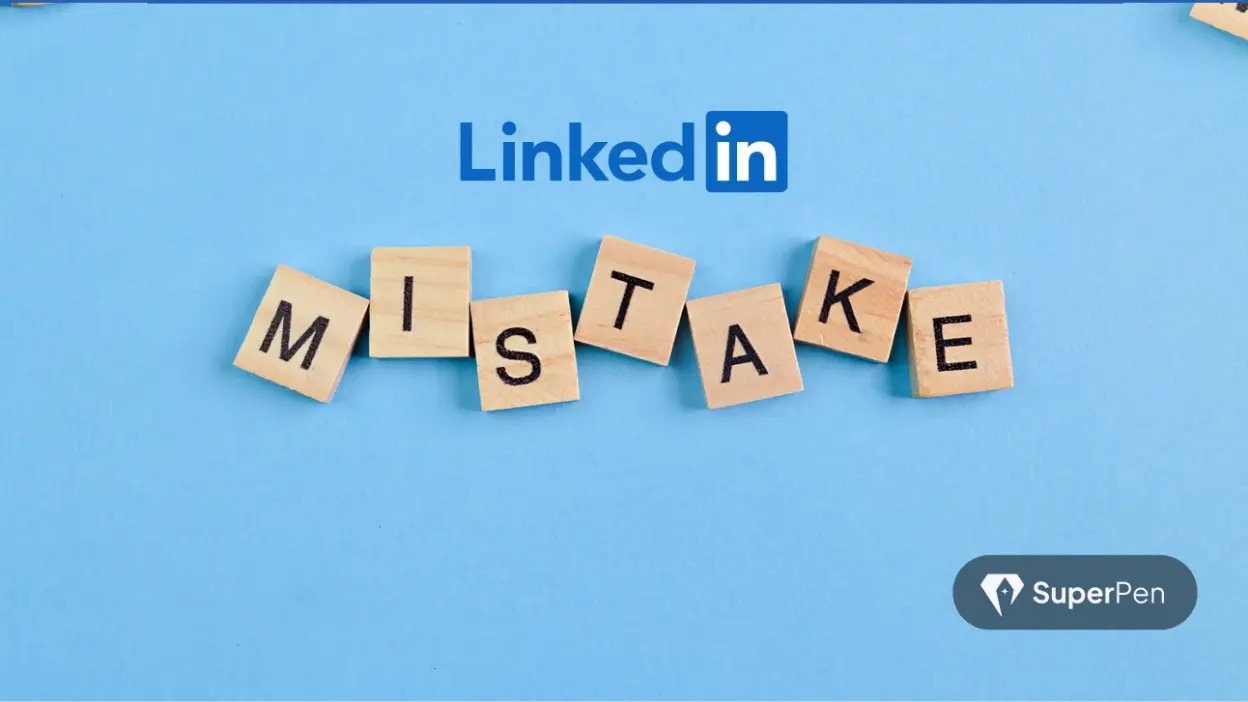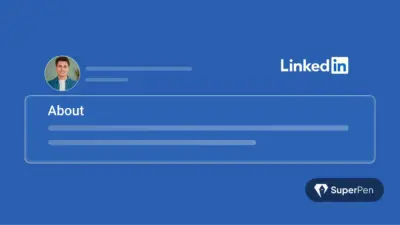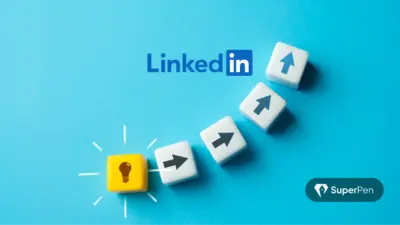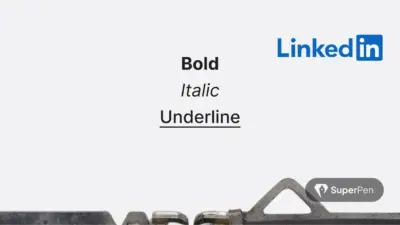You ever feel like you’re posting but not progressing?
Welcome to the club.
You’re showing up. You’re writing. Maybe even hitting “Post” three times a week.
But if you’re not seeing connection requests or conversations – chances are, you’re making some common LinkedIn posting mistakes without even realizing it.
Instead of engagement… you get silence.
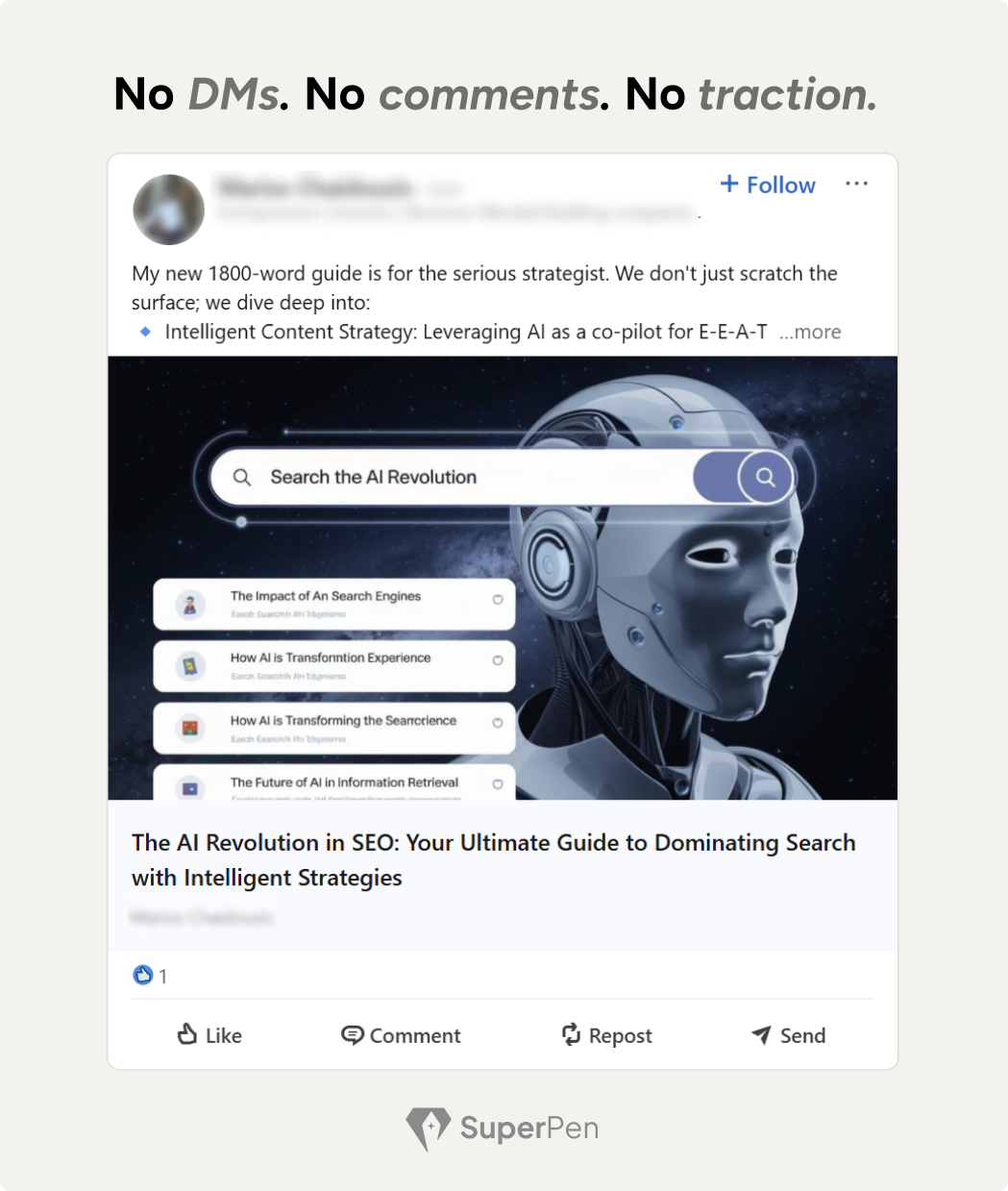
It’s not that your content sucks. It’s that your strategy does.
Most LinkedIn creators don’t lack effort – they just unknowingly sabotage their visibility.
They write like they’re updating their resume, not like they’re talking to real humans.
They post like they’re shouting into the void instead of starting a dialogue.
They forget that attention is earned – not assumed.
If that sounds familiar, don’t worry. You’re not broken. You’re just one strategy shift away from making LinkedIn actually work for you.
Table of Contents
Here’s how to fix that.
1. Boring First Lines That Lose Attention
❌ “LinkedIn is great for networking.”
✅ “80% of LinkedIn posts flop. Here’s why yours doesn’t have to.”
What to do instead:
Hook hard. Your first line is your headline. Start with a bold statement, a surprising stat, or a punchy question. Think less “update,” more “attention grabber.”
For more on crafting compelling openings, check out this guide on writing LinkedIn recommendations that stand out.
2. Selling Before Serving
❌ “Our product is live. Buy now.”
✅ “We hit a wall scaling operations. This tool changed everything.”
What to do instead:
People don’t log into LinkedIn to be sold to – they log in to learn. Position your wins as lessons, not pitches. Share the struggle, then the solution.
Have a look at this post to understand how the promotion of your product should be done:
3. Ignoring Engagement
❌ Drop a post and vanish.
✅ Stick around. Reply. Ask questions. Spark conversations.
What to do instead:
Think of every comment as a conversation starter. The algorithm rewards dialogue. Your audience? They remember the people who listen.
4. Posting Like a Ghost
❌ Once a month rants don’t cut it.
✅ Consistency compounds.
What to do instead:
You don’t need to post daily. But you do need rhythm. Set a schedule – even if it’s weekly. LinkedIn thrives on familiarity.
Related read: The Ultimate Guide: How Often to Post on LinkedIn for Maximum Impact in 2025
5. Visuals? What Visuals?
❌ Walls of text = death scroll.
✅ Use carousels, photos, short clips.
What to do instead:
Visuals stop scrolls. Carousels teach. Screenshots show proof. Even a simple headshot adds warmth.
6. A Dusty, Dead Profile
❌ No photo. Vague headline. Empty summary.
✅ “Helping [audience] solve [problem] using [skill].”
What to do instead:
Optimize your profile like it’s your homepage. Every post you write is a front door – make sure the house looks great inside.
7. Jargon Overload
❌ “Leveraging synergistic paradigms to optimize ROIs…”
✅ “We worked together to cut costs and grow faster.”
What to do instead:
Clarity beats clever. Speak like a human. Write like you talk at lunch with a smart friend, not like you’re pitching on Shark Tank.
8. Talking to Everyone (So No One Listens)
❌ Generic content = generic results.
✅ “If you’re a solopreneur struggling with outreach, read this.”
What to do instead:
Know your audience. Speak to their pain points. Be niche, not nice. It’s how you become memorable.
For insights on tailoring content to different platforms, explore this comparison between LinkedIn and Instagram content strategies.
9. Flying Blind
❌ Keep posting. Hope something sticks.
✅ Review metrics. Double down on what works.
What to do instead:
Analytics don’t lie. Study what earned saves, comments, clicks. Rinse and repeat. LinkedIn gives you the data – use it.
10. Sharing Without Adding
❌ Just dropping a link = no context, no clicks.
✅ “This article changed how I think about remote work. Especially this point…”
What to do instead:
Always add your perspective. A one-liner, a summary, a quote that resonated. Otherwise, you’re just another link in the feed.
For example:
TL;DR – Your Anti-Cringe Checklist
- Hook strong.
- Post consistently.
- Engage like a real human.
- Add visuals.
- Know your audience.
- Skip the jargon.
- Optimize your profile.
- Use analytics.
- Serve before selling.
- Always add your take.
Bonus Tips
- Use 3–5 relevant hashtags – too many = spammy.
- Experiment with formats: polls, carousels, video.
- Connect intentionally – not just with people, but with purpose.
Frequently Asked Questions
Q1: How often should I post on LinkedIn?
Aim for 1 to 3 times per week. That’s the sweet spot for most creators. But the real game-changer? Consistency. Whether it’s once a week or every weekday, showing up regularly builds trust with your audience – and trains the algorithm to show your content more often.
Q2: What type of content works best on LinkedIn?
Content that helps your audience, tells a real story, or shares something useful tends to perform best. Think insights from your work, behind-the-scenes lessons, actionable tips, or industry trends. And it’s not always about the wins – people resonate more with the real, raw journey.
Q3: Should I share personal stories on LinkedIn?
Absolutely – but make them relevant. Personal stories that tie into your professional growth, values, or mindset tend to land well. Vulnerability builds connection. Just make sure there’s a takeaway for the reader-turn your story into a lesson, not just a life update.
Q4: Can I still promote my business on LinkedIn?
Yes, you can-and you should. But lead with value. LinkedIn isn’t about hard sells; it’s about showing how your work solves real problems. Educate, inspire, or share proof – then invite people to take the next step. Serve first. Sell second. That’s how trust (and conversions) are built.
Final Word
Your next client, job, or investor is one scroll away. But only if you show up right.
Fix these 10 Linkedin posting mistakes and your posts won’t just be seen – they’ll be remembered.
And if you’re serious about turning LinkedIn into your personal growth engine, Superpen can help. From scroll-stopping hooks to structured storytelling, it’s the toolkit creators and founders use to write content that converts.
Ready to build a personal brand that works while you sleep? Then stop posting like a resume – and start showing up like a resource.


